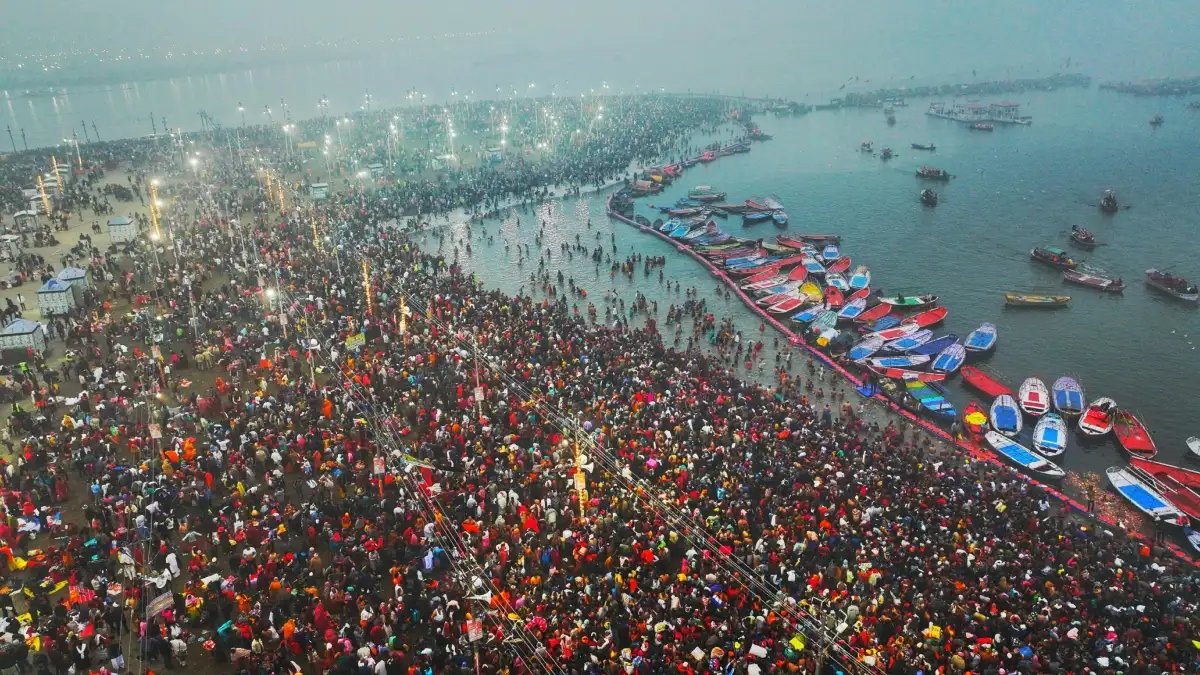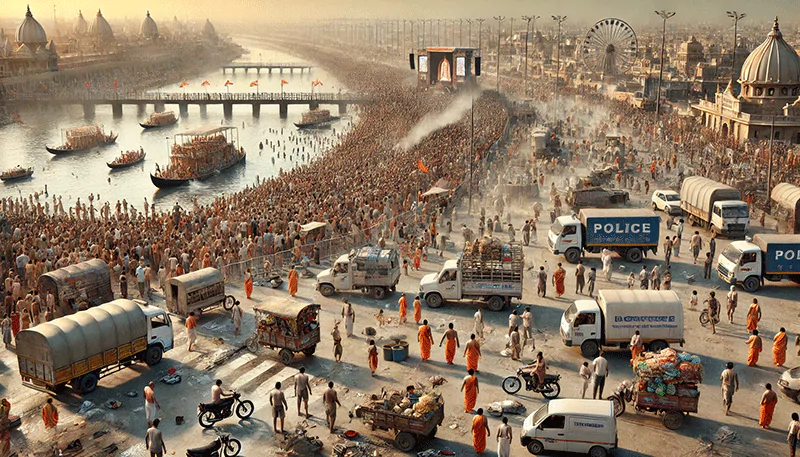Post Kumbh Mela - Prayagraj
This year's Kumbh Mela was termed a "Maha Kumbh," considered the most significant in 144 years due to a rare planetary alignment. Millions of devotees from across India participated in the religious gathering.
Impact on Prayagraj
Economic Boom
- The mela provided a massive business opportunity for the city's residents.
- Transportation services (cabs, bike taxis, e-rickshaws, and boats) profited heavily.
- Some boat operators reportedly earned up to ₹30 crores in 45 days.
- Prices for transportation surged—bike taxis charged ₹800 per ride, while boats charged thousands per person.
Disruptions for Locals
- The city was heavily barricaded, causing difficulty for residents in commuting.
- Major roads, including Nyaya Marg and the Grand Trunk Road, were blocked.
- Local businesses suffered as foot traffic decreased in non-mela areas.
- Allahabad High Court and Allahabad University were closed during the event.
- Residents had to deal with traffic congestion, and bus stations were relocated outside the city.

Logistical Challenges
Transport Restrictions
- Outstation buses dropped passengers at far-off locations like Bela Kachar (10 km from the city).
- Many pilgrims had to walk long distances due to road closures.
Sanitation and Waste Management
- The city faced massive waste accumulation, with streets covered in disposable plates, plastic cups, and lost footwear.
- Cleanup efforts began immediately after the mela ended.
Post-Mela Scenario
City Returns to Normal
- Police began removing barricades on February 27.
- Roads reopened, allowing normal traffic flow.
- Coaching institutes and businesses resumed operations after a long disruption.
- Cleanup operations were in full swing, with trucks ferrying away garbage from the mela site.
Religious and Cultural Continuation
- Even after the official end, some latecomers still arrived for a holy dip in the Ganga.
- Certain installations and digital experiences related to the mela remained open for visitors until early March.













